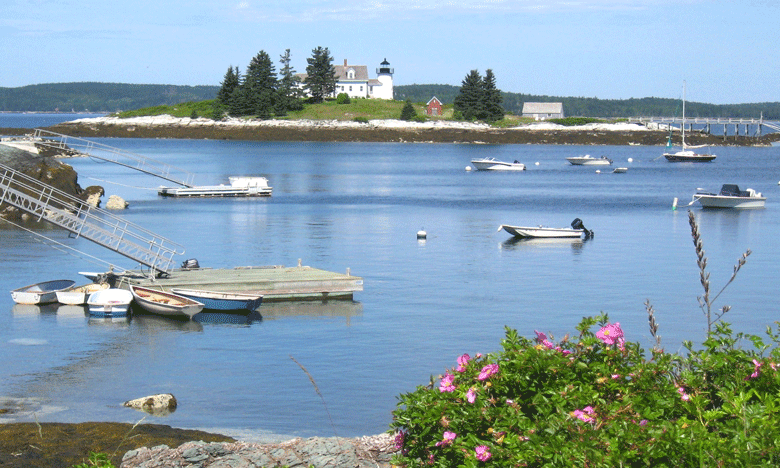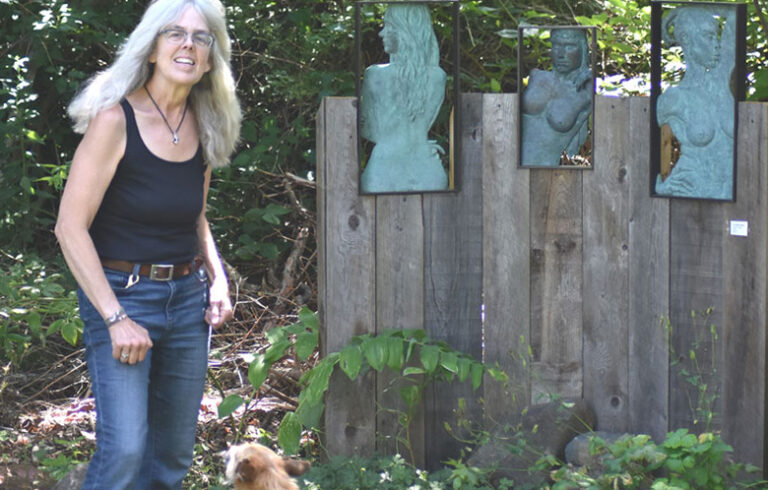Reflections is written by Island Fellows, recent college grads who do community service work on Maine islands and in coastal communities through the Island Institute, publisher of The Working Waterfront.
As an Iowa native, I didn’t know there were islands off the coast of Maine before applying to be an Island Fellow. When I accepted the position and agreed to relocate more than a thousand miles to Deer Isle, I was desperate to learn as much as I could about my new coastal community.
By early September, I could recite:
• the most recent census count (3,250, roughly a quarter of which are included in the 65-plus demographic I work with)
• 73 local organizations, most registered with our chamber of commerce
• the annual revenues from lobster in 2021 (over $70 million)
One year later, I’m thankful to say that I’ve never been tested on any of these statistics.
Fortunately, the Island Institute welcomes incoming Fellows with a surplus of resources to help us acclimate, no matter from how far away we come. My favorite piece of advice came from a former Fellow—take time for personal tours with advisors, neighbors, or anyone willing to share a bit of their perspective on life in coastal Maine.

I’ve since had the pleasure of touring Deer Isle by land, air, and sea, and I always learn something new, often at the sites I’ve seen a million times before. I’m lucky to work with our seniors, the experts on Deer Isle’s history, character, and people. With them by your side, a drive to the ice cream shop or a quick walk to the beach can turn into a lesson on island life.
It takes roughly two hours (about 50 miles) to drive the main road, Route 15, in a loop around the island, connected by its three crossroads, with forays into Little Deer Isle, Sunshine, and Oceanville. The tour officially begins at the jaw-dropping Deer Isle Bridge.
I love to imagine the crowds on the day it was opened in 1939, described to me by someone who was just two years old at the time. Many things, like a long-empty storefront in Deer Isle village, are referred to by what they used to be: “The old fill-in-the-blank.”
I’ve since had the pleasure of touring Deer Isle by land, air, and sea…
Just a few minutes down the road is my office at Healthy Island Project, which had housed a women’s temperance union, a library, and a parish house over the last century. My favorite stop is the Legion Hall, the setting of many lively stories about the weekly dances held there in the 1950s.
There are some very secret places too—like the cranberry bog where a neighbor of mine grew up catching pollywogs and tadpoles—and places I’ve never been at all, like the quarry where hundreds cut stone at Crotch Island.
Some places don’t look like much at all, like “Lover’s Lane,” a sharp bend in the road known for physically piling passengers on top of one another.
My work often takes me around the island all day, whether it’s delivering meals to the 140 “Salt Air Seniors” who receive our weekly lunch program or traveling to just one person at the end of a winding road seeking help with online services.
After a year of touring Deer Isle, I’m excited to recognize some of my own landmarks too—houses where I always honk twice to say hello, the best shaded place to sit in the parking lot of the senior living community, and a one-mile path that I walk at least once a day through Stonington’s downtown. However, when I lead tours of the island, I only tell a few of my own stories. More often, I find myself retelling those of others.
Hallie Lartius works with Deer Isle-Stonington’s Healthy Island Project, a nonprofit that provides information, makes connections, and coordinates projects to promote healthy living. She may be reached hlartius@islandinstitute.org.





